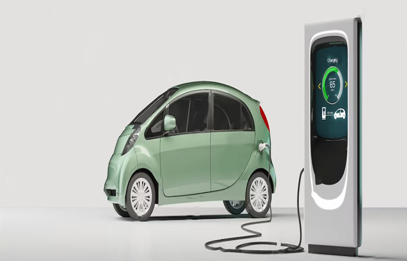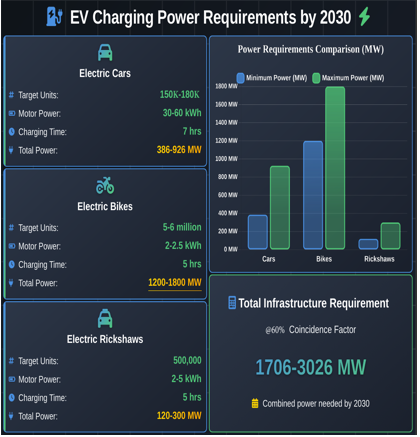INP-WealthPk
Amir Saeed
Despite having sufficient national power generation capacity, Pakistan’s ambitious EV targets for 2030 could overwhelm urban distribution grids. The challenge lies in the concentrated demand and inadequate local infrastructure, which require urgent upgrades and smart management, an energy expert tells WealthPK.

Ammar Kharal, an energy expert, said Pakistan aims to introduce 150,000 to 180,000 electric cars, 5 to 6 million electric bikes, and around 500,000 electric rickshaws by 2030.
Based on the projected charging patterns and a 60% coincidence factor, this shift could add between 1,706 and 3,026 megawatts of additional electricity demand to the national grid.
At first glance, this seems manageable. After all, Pakistan’s installed power generation capacity is about 46,000MW, while the peak demand stays below 25,000MW. The increasing rooftop solar adoption indicates that the overall energy supply could support the EV surge.

By 2030, the projected power requirements for EV charging infrastructure are substantial, reflecting the anticipated growth in electric mobility. For electric cars, the target is to support between 150,000 and 180,000 units, each with a motor power ranging from 30 to 60kWh and an average charging time of 7 hours.
This translates to a total power requirement of approximately 386 to 926 megawatts (MW). Electric bikes, with a much larger target of 5 to 6 million units and motor power between 2 and 2.5 kWh, require about 1,200 to 1,800MW, assuming a typical charging duration of 5 hours.
Meanwhile, electric rickshaws, projected to reach 500,000 units, will have a motor power range of 2 to 5 kWh and a 5-hour charging time, requiring a total of 120 to 300 MW. These estimates are calculated using a 60% coincidence factor, which assumes that not all vehicles will be charging at the same time, ensuring a realistic assessment of the infrastructure needed to meet the growing demand for electric vehicle charging by 2030.
However, Ammar opined that the real challenge lies not in total power generation but in geography and infrastructure. “If EV adoption is concentrated in specific areas, such as urban centres or wealthier neighborhoods, the burden on local distribution networks could become critical.
“Without targeted upgrades, the existing feeders, transformers, and substations may become overloaded, leading to localized blackouts, equipment failures, and voltage fluctuations during peak hours. This reveals that the issue at hand is not merely about generation capacity but about the readiness of the distribution network to handle localized spikes in demand,” he added.
“To ensure a smooth and successful EV transition, the government must focus on reinforcing distribution infrastructure, particularly in high-adoption zones. This includes investing in smart grid technologies, deploying intelligent charging systems, introducing time-of-use tariffs to spread demand more evenly, and integrating EV strategies into broader urban planning efforts,” Ammar suggested.
“While the national grid can technically accommodate the EV load, resilience depends on making the grid smarter and stronger exactly where it is needed. In short, Pakistan can afford the EV boom but only if it plans beyond numbers and prioritizes targeted infrastructure upgrades to ensure a stable, future-ready grid,” he said.
Credit: INP-WealthPk













